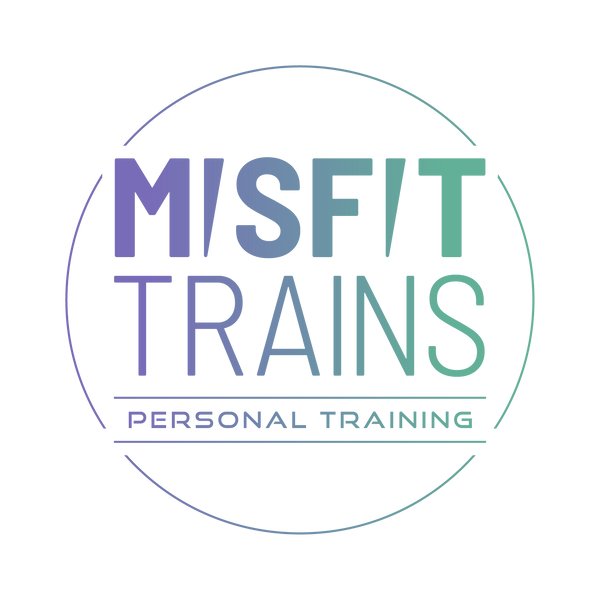
Returning to Training After Pregnancy
Share
Returning to training after pregnancy is an important aspect of your postpartum journey, balancing the need to care for your new baby while also paying attention to your health and well-being. It's common to feel a bit out of sync with your body after childbirth, but it's equally important to give yourself grace during this period. Your mental health, as much as your physical recovery, deserves attention as you navigate motherhood.
As you think about getting back into training, whether that's independently or with a personal trainer, it's important to listen to your body and take it slow. Your body has undergone significant changes over the past several months, and it's still adjusting even after giving birth. Considering factors like pelvic floor strength and the potential lingering effects of relaxin - a hormone that loosens ligaments during pregnancy - is key to a safe return to exercise. Remember, there's no rush, and setting realistic goals can be a sustainable way to regain your fitness.
Healthcare professionals often advocate for a gentle start, possibly with pelvic floor exercises, which are believed to help in preventing and treating conditions such as urinary and faecal incontinence. It's not just about physical recovery; easing back into training can also have a positive impact on your mental health, providing you with some much-needed 'you time' and a sense of normalcy in the whirlwind of motherhood. With each small step, you're not just rebuilding strength; you're also nurturing resilience for the new challenges that parenthood brings.
Assessing Your Health Post-Pregnancy

After giving birth, your body has been through a lot, so it's crucial to take steps to understand the changes and speak to the right professionals before jumping back into training.
Understanding Your Body After Childbirth
Childbirth is a significant event that impacts various body parts, especially your pelvic floor muscles and abdomen. You might experience diastasis recti, which is the separation of the abdominal muscles, a common condition after pregnancy. Recognising how your body has changed is the first step towards a safe return to your training routine.
- Pelvic Floor Muscles: These muscles can be weakened after childbirth, so it’s important to check for any signs of pelvic floor dysfunction.
- Abdominal Muscles: Check for any separation in the abdominal muscles known as diastasis recti. This condition may affect your core strength and stability.
Consulting with Healthcare Professionals
Before you lace up your trainers, a visit to a pelvic health physiotherapist should be on your to-do list. They're trained to assess and treat postpartum conditions, including issues with pelvic health.
- NHS Guidance: Follow their recommendations on postpartum care, as NHS guidelines are designed to safeguard your health while considering the physiological changes post-birth.
- Individual Assessment: Each body is unique, and a personalised check-up will cater to your specific needs, ensuring you're ready to train safely.
Foundations of Postnatal Fitness

After you've had a baby, it's vital to rebuild your base fitness gently and methodically. Your body's undergone significant changes, and two key areas to focus on are your pelvic floor and core stability. Let's get cracking.
The Pelvic Floor and Its Importance
Imagine your pelvic floor as the unsung hero that's been through the wringer during pregnancy and childbirth. It's a group of muscles that acts like a supportive sling for your bladder, bowel, and uterus. After you've given birth, these muscles can be quite weakened.
Start with pelvic floor exercises, also known as Kegels, to regain strength in this essential area. Here's how you can get started:
- First, make sure you can identify your pelvic floor muscles. Try to stop the flow of urine midstream; the muscles you use are your pelvic floor.
- Try to squeeze these muscles, hold for a few seconds, and then relax, ensuring you breathe normally throughout.
- Repeat these squeezes regularly throughout the day, aiming for three sets of ten reps.
Working on your pelvic floor is critical not just for fitness but for your overall well-being, reducing the likelihood of incontinence and other pelvic floor issues.
Incorporating Core Stability and Strength
Your core encompasses not just your abs but also your back and the deeper muscles around your midsection. During pregnancy, your abdominal muscles, especially the rectus abdominis, stretch and may even separate. This condition, known as diastasis recti, affects your core stability and strength.
To strengthen your core post-pregnancy, start with breathing exercises and gentle movements. Here's a basic routine to enhance core stability:
- Breathing exercises: Focus on deep belly breathing to engage your core. Inhale deeply, allowing your belly to expand, then exhale slowly, pulling your navel towards your spine.
- Stability exercises: Begin with movements that don't strain your abdominals. Lie on your back with knees bent and feet flat on the floor. Gently rock your pelvis back and forth without lifting your hips off the ground.
As you progress, you can slowly introduce more challenging exercises, but remember, no crunches or sit-ups right off the bat—they can exacerbate diastasis recti. Instead, opt for exercises that maintain the natural curve in your back and work the deeper core muscles, like pelvic tilts or toe taps.
Creating a Tailored Training Programme

After pregnancy, it's crucial to restart your activity with a training programme that's tailored just for you. It’s got to account for your unique postpartum recovery process and fitness goals.
Starting with Low Impact Activities
Kicking off your return to fitness, low impact activities should be your go-to. Activities like walking are brilliant because they're gentle on your body, but still get your heart pumping. Another fab option is swimming. It's ace because the water supports your weight, taking the strain off your joints while you work out your entire body.
Gradually Introducing Strength Training
Once you’ve got into the groove with low impact activities, it’s time to up the ante a bit with some strength training. Begin with lighter weights and more reps. This way, you're gentling easing your muscles back into exercise. Always keep a personal trainer or a coach in the loop; they can offer you tailored advice and make sure you're on track without overdoing it.
Managing Physical Considerations and Limitations

After childbirth, your journey back to training isn't just about picking up where you left off. It's crucial to manage physical considerations and limitations to avoid injury and address postpartum issues effectively.
Recognising and Preventing Injury
Postpartum, your body has undergone significant changes, and injuries can be more likely if you're not careful. Listen to your body and take cues from any discomfort as a sign to slow down. Start with low-impact exercises before gradually incorporating more strenuous activities. It's important to have your physiotherapist’s green light, especially if you've had a C-section, as your healing process might differ and generally takes longer.
Be mindful when doing exercises like squats; they should be done with proper form and possibly modified to account for your postpartum state. Always warm up before exercising, and focus on rebuilding core strength, which is foundational to prevent injuries.
Addressing Issues like Incontinence and Prolapse
Urinary and bowel incontinence postpartum can be unnerving, but they are common and often improve with targeted pelvic floor exercises. Regaining strength in your pelvic floor muscles is key to managing and resolving incontinence. Performing Kegels or other pelvic floor exercises can be beneficial, but make sure you're doing them correctly – it might be worth consulting a specialist for guidance.
Pelvic organ prolapse is another condition you might face, where pelvic organs slip out of place. Addressing pelvic floor dysfunction early is crucial to prevent prolapse from worsening. Incorporate exercises that support pelvic health but steer clear of high-impact activities that can exacerbate the problem.
Navigating Mum's Lifestyle Adjustments

Adjusting to life after having a baby is a unique journey, especially when you're keen to get back into training. Your routine will now revolve around your little one's needs, from feeding schedules to nap times, impacting every aspect of your daily life, including exercise and self-care.
Balancing Training with Childcare
Childcare and Training:
- Breastfeeding: If you're breastfeeding, consider aligning your training around your little one's feeding times. Expressing milk can offer you more flexibility.
- Running: Post-pregnancy, you might start with a "couch to 5k" plan. Ensure you have reliable childcare arranged, so you can jog worry-free.
- Employer Collaboration: Upon returning to work, discuss your training goals with your HR department to arrange a schedule that accommodates both work and fitness.
Practical Tips:
- Schedule short, home-based workouts during your baby's naps.
- Look for gyms offering onsite childcare services.
- Include your baby in your exercise routine with a jogging stroller.
Understanding the Impact of Sleep and Nutrition
Sleep and Recovery:
- Musculoskeletal Recovery: Your joints and muscles need adequate rest to heal, especially after childbirth.
- Energy Levels: A good night's sleep boosts your energy levels, integral for both motherhood and running.
Nutrition for Lactation and Training:
- Hydration: Aim for at least 2-3 litres of water daily to support milk production and post-exercise recovery.
- Balanced Diet: Your diet should be rich in protein, vitamins and minerals to support lactation and muscle repair.
- Snack Smart: Opt for nutritious snacks like nuts, fruit, or yoghurt to fuel your body without affecting body weight drastically.
Frequently Asked Questions

After giving birth, you might be keen to get back into training, but it's crucial to tackle this safely. These FAQs tackle common concerns for new mums wanting to resume their fitness routine.
How soon can I begin exercising after a vaginal birth with stitches?
You should generally wait until after your postnatal check (usually six to eight weeks after giving birth) before starting high-impact exercises, especially if you have stitches. However, gently increasing movement as soon as you feel up to it is encouraged.
Is it safe to start walking shortly after giving birth?
Yes, walking is a low-impact activity that can typically be started soon after delivery, as long as you feel comfortable. It's a great way to begin easing your body back into exercise.
What exercises can help with getting my tummy back in shape post childbirth?
Focus on pelvic floor exercises and gentle core strengthening such as pelvic tilts. These will help regain stability and strength in the abdomen after pregnancy and childbirth.
How quickly can a new mum realistically regain her pre-pregnancy fitness level?
The timeline for returning to your pre-pregnancy fitness level varies greatly and depends on factors such as your fitness level before and during pregnancy, the nature of your birth, and how your body recovers postpartum. There's no set time, so listen to your body and don't rush.
What are the benefits of taking up walking as a postnatal exercise?
Walking is a fantastic postnatal exercise because it helps to build stamina, doesn't strain your joints, and can boost mental health, providing much-needed fresh air and a change of scenery.
When is it advisable to go back to work after maternity leave?
Legally, you have a right to up to 52 weeks of maternity leave, but when to return to work after maternity leave is your personal choice and depends on various factors, including your health, your baby's needs, and your work situation.
